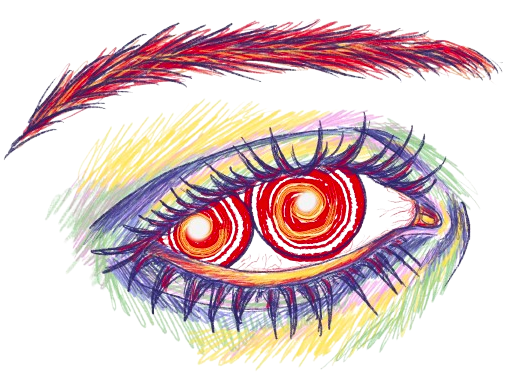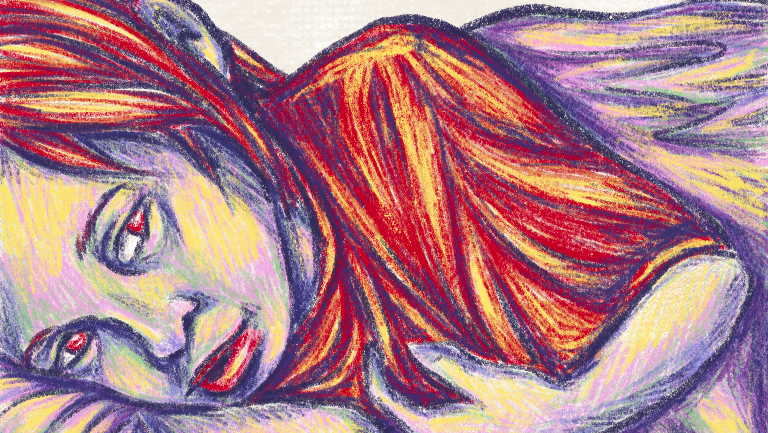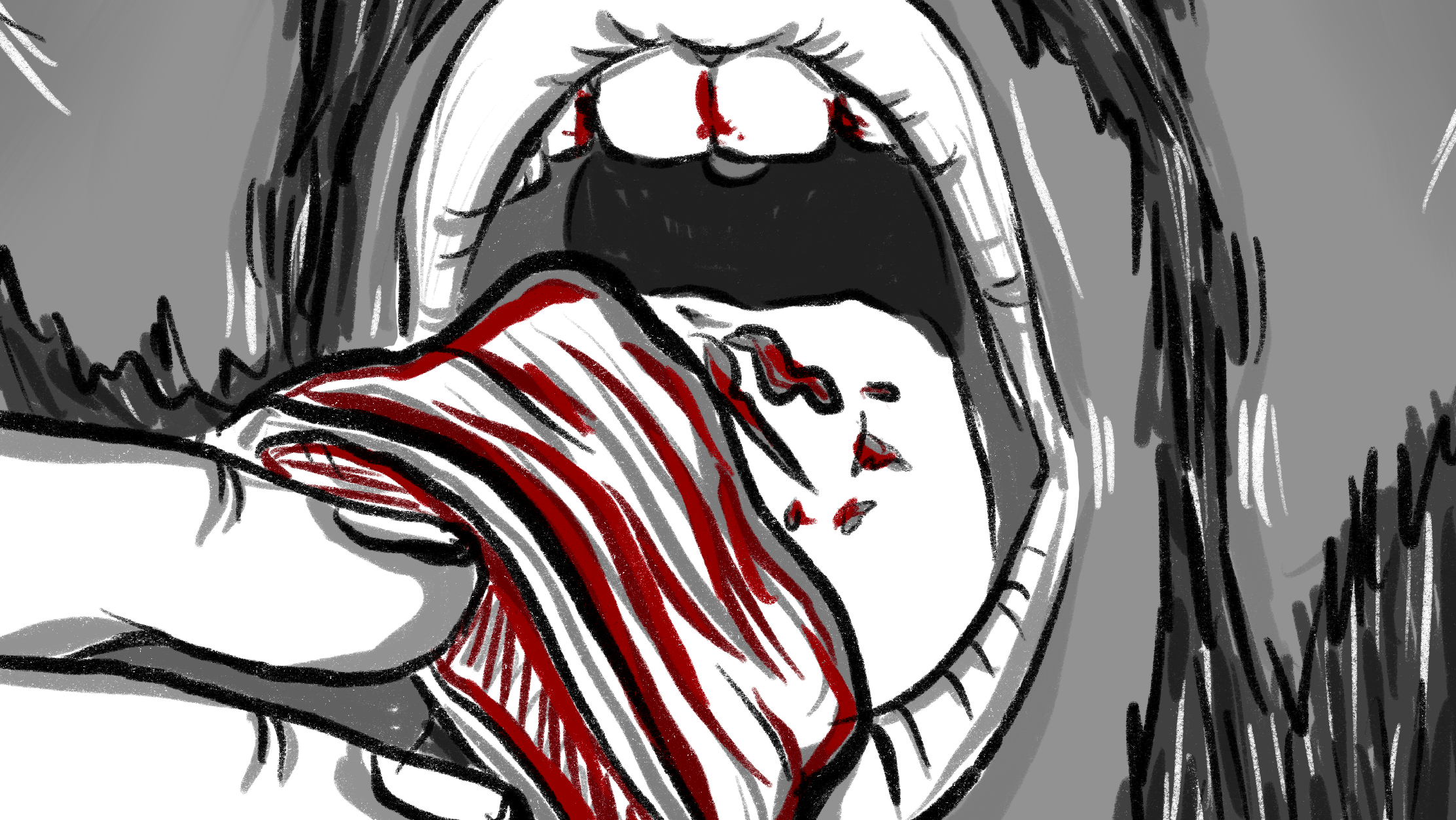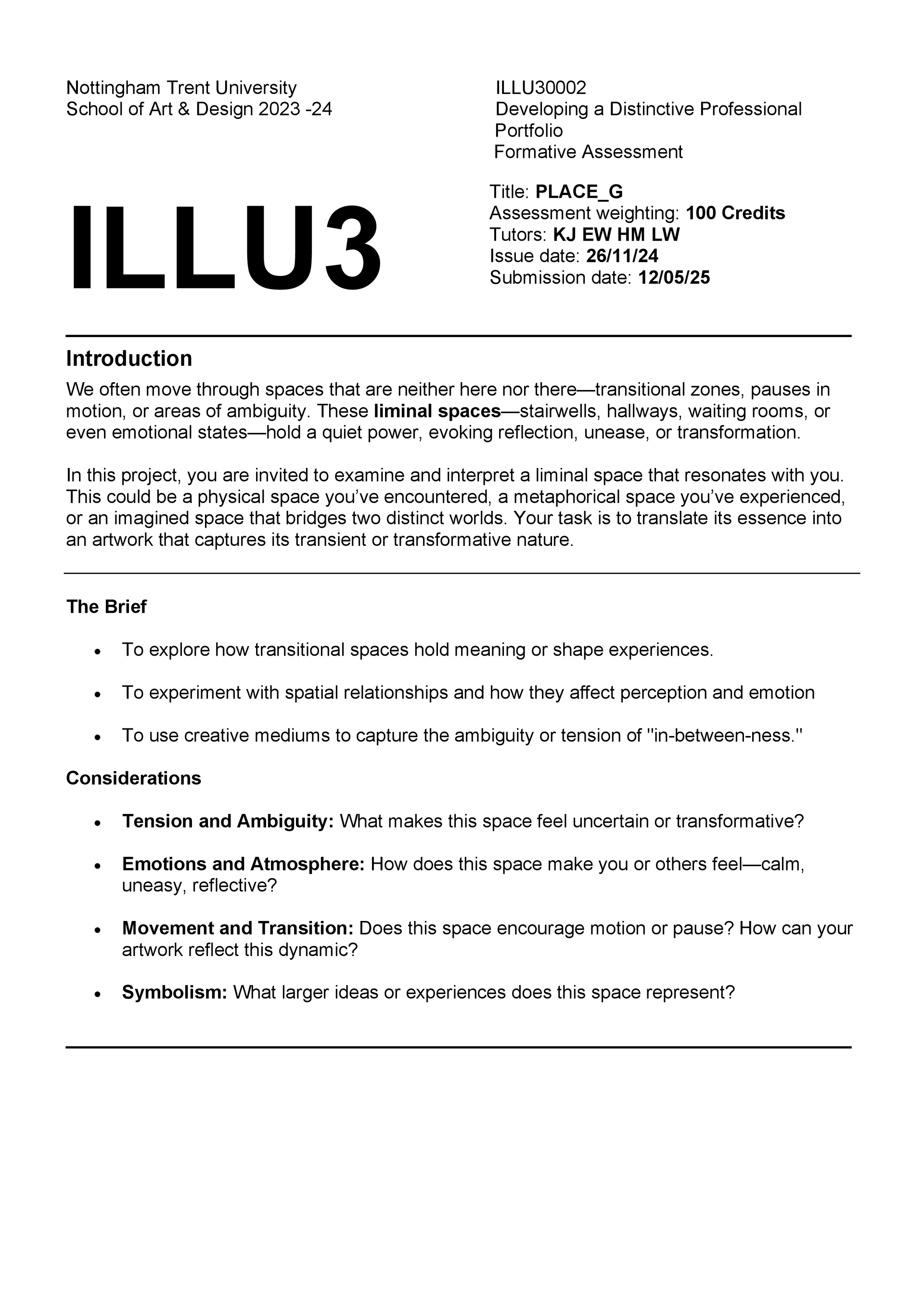

For this brief, we were asked to explore and illustrate the concept of liminal spaces—those transformative or in-between places that evoke a sense of motion or change. Initially, I chose bathrooms, washrooms, or toilets as my focus, as it was the first idea that came to mind. Typically, bathrooms are seen as places where people "fix" or "relieve" themselves—a functional space for showering, changing clothes, or adjusting one’s appearance. At first, I questioned whether a bathroom could truly qualify as a liminal space, since it doesn’t physically take you from one destination to another. Instead, it’s a space where you enter and then return to the same place.
However, I came to view the bathroom as its own kind of journey. For me, the bathroom has always been the most significant room in any house. Since childhood, I’ve spent a lot of time in bathrooms—not just using the toilet or showering, but sitting or lying on the floor. I even have a daily ritual I call "floor time," where, whenever I feel overwhelmed, I lie on the bathroom floor to calm down and reset. The bathroom has always been a deeply private, personal space for me, where I can breathe and find solace. Strangely, no other room feels quite the same; lying on the bedroom or living room floor just doesn’t have the same effect. It has to be the bathroom.
Living with borderline personality disorder (BPD), I often struggle with emotional regulation and sensory overstimulation. This is why having a private space solely dedicated to grounding myself is so important at home. For me, the bathroom has always served as that sanctuary—a place where I can pace my breathing, release my emotions through tears, or process my anger in peace.
What makes the bathroom so unique is the unspoken respect people have for your time there; it’s a space free from interruptions, where I can truly be alone. Every time I step inside, I use it as an opportunity to reset. I might enter overwhelmed, but I leave feeling like a different person—calmer, more composed, and ready for social interaction again.

Black Swan
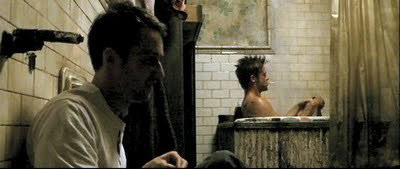
Fight Club
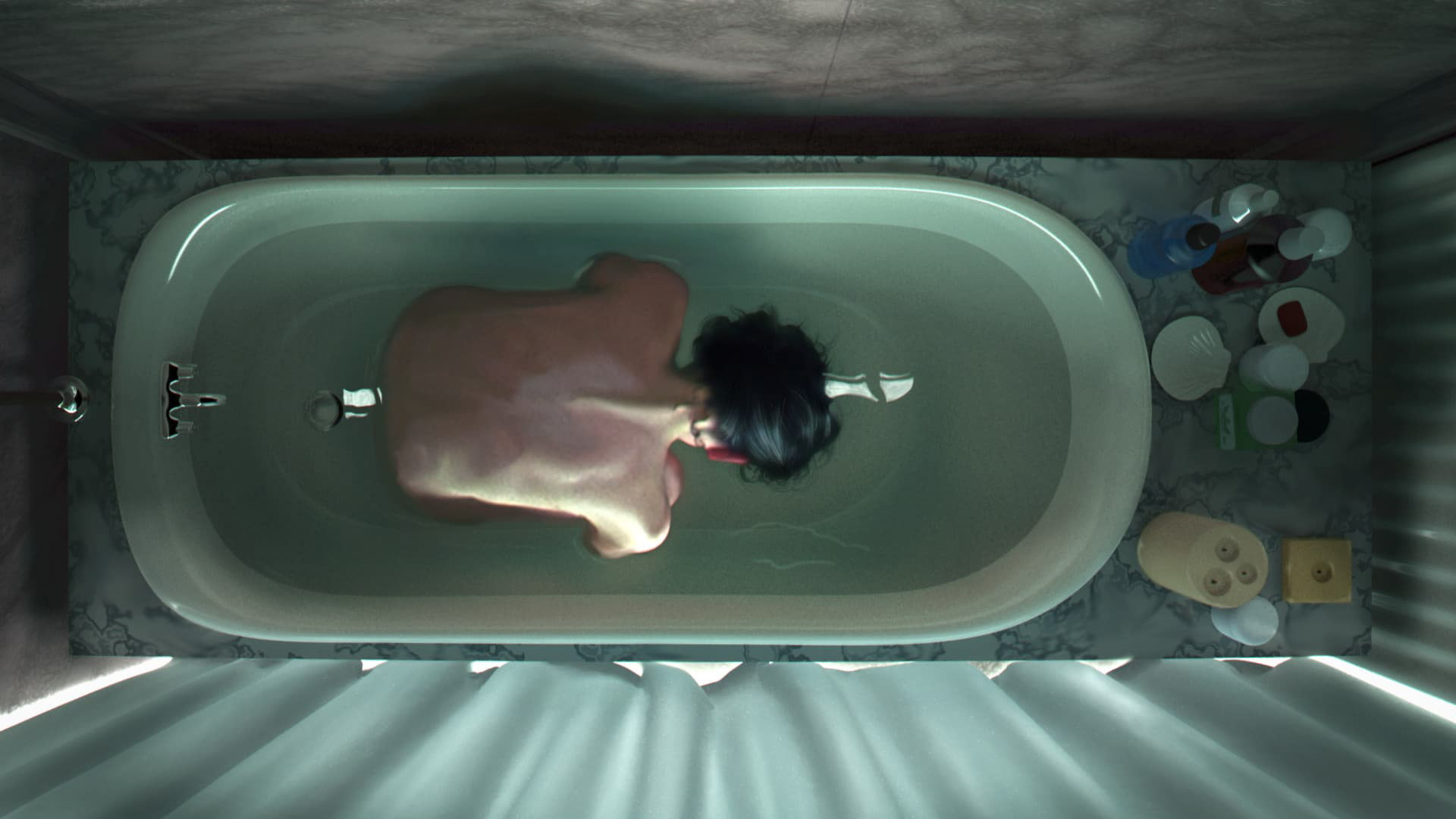
Requiem for a Dream

Ferris Bueller's Day Off
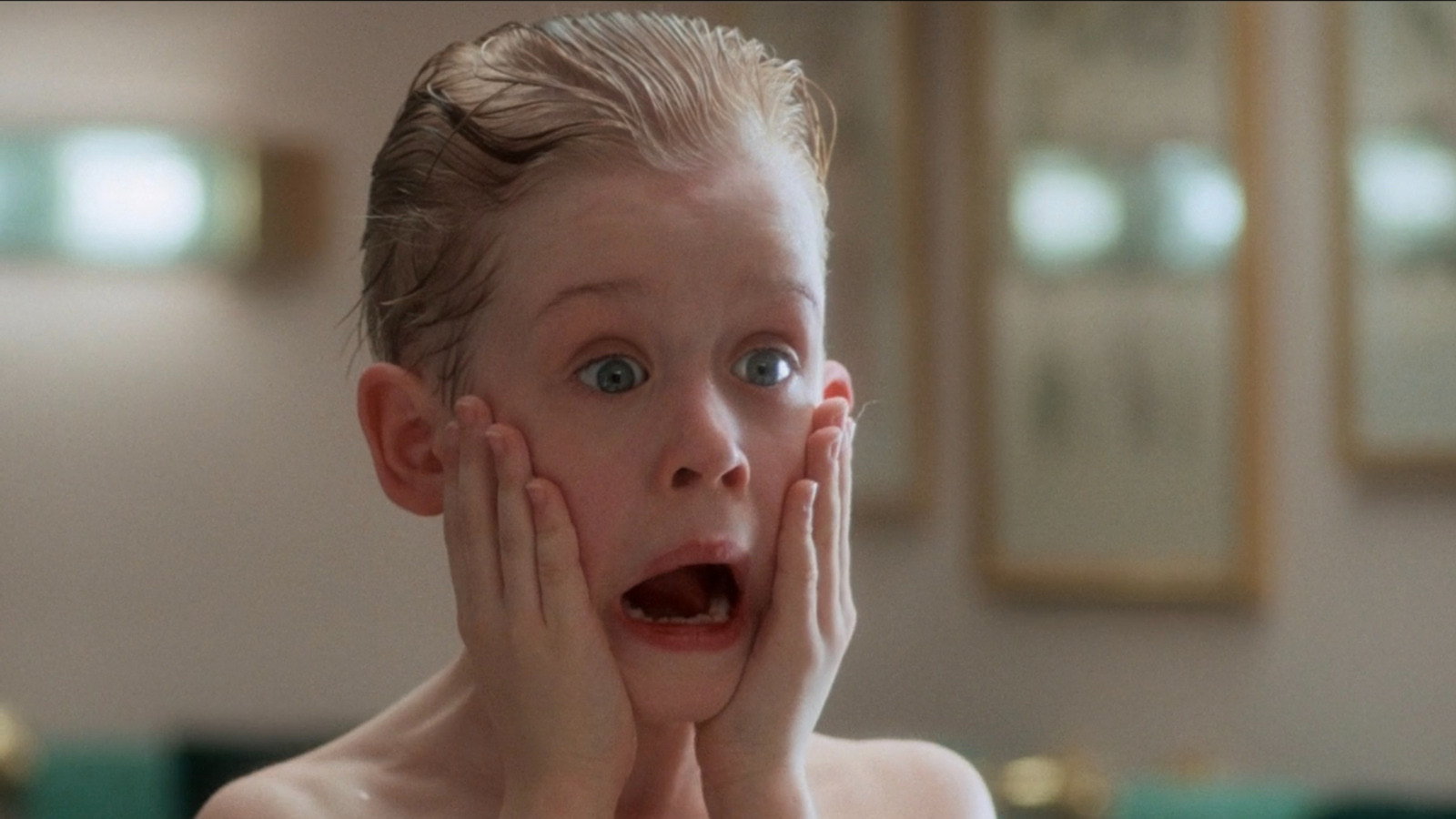
Home Alone

Saltburn

Driving Lessons

Euphoria

Spencer
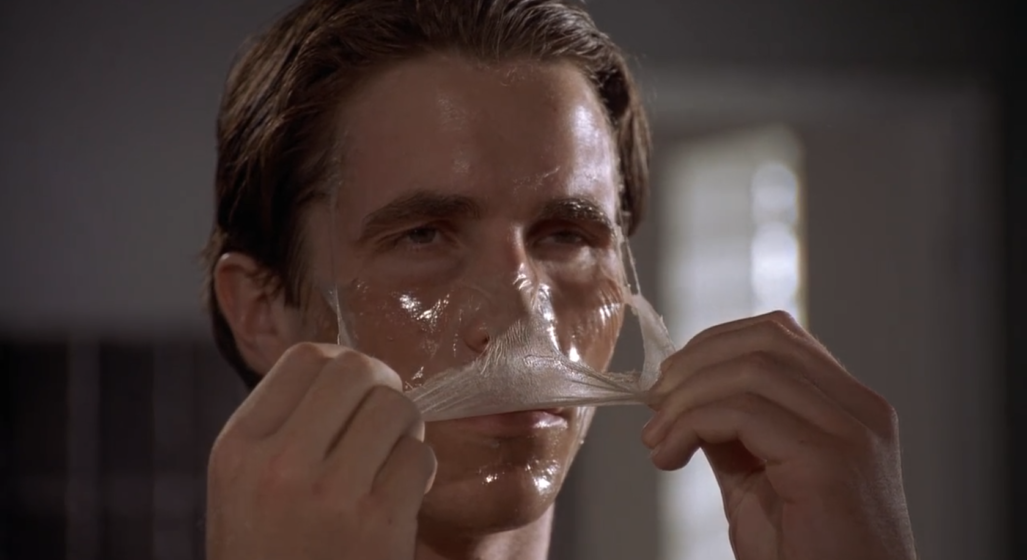
American Psycho

Parasite
This idea isn’t new. Bathrooms have always been a go-to in movies for showing characters going through some kind of transformation. Whether it’s calming down after a tense moment or blowing off steam in anger, they’re often the setting for those big emotional shifts.
I started thinking about what my ideal bathroom would look like, and the answer surprised me. I consider myself a colorful person—I try to be, at least. My wardrobe is filled with every color on the wheel, and I collect Funko Pops, bottle caps, coins, and other trinkets. The walls in my room are barely visible under all the posters, artwork, and cards I’ve put up. But despite my love for all things maximalist, I prefer my liminal space to be cold, bland, and empty.
I’m not entirely sure why that is. Maybe it’s because, when I’m overwhelmed, the simplicity of bare walls and harsh hospital lighting grounds me. It helps me reset. I’ve also realized that once I feel better in that stark, empty space, I’m eager to leave it behind and return to the warmth and fullness of my room. In a way, it’s like I have to hit rock bottom in that minimal space to fully appreciate the light and vibrancy waiting for me outside.
The best example I can think of that mirrors this idea is the bathroom in the movie Substance. Many of the film’s most significant transformative moments take place in that stark, harsh bathroom, perfectly illustrating my point.
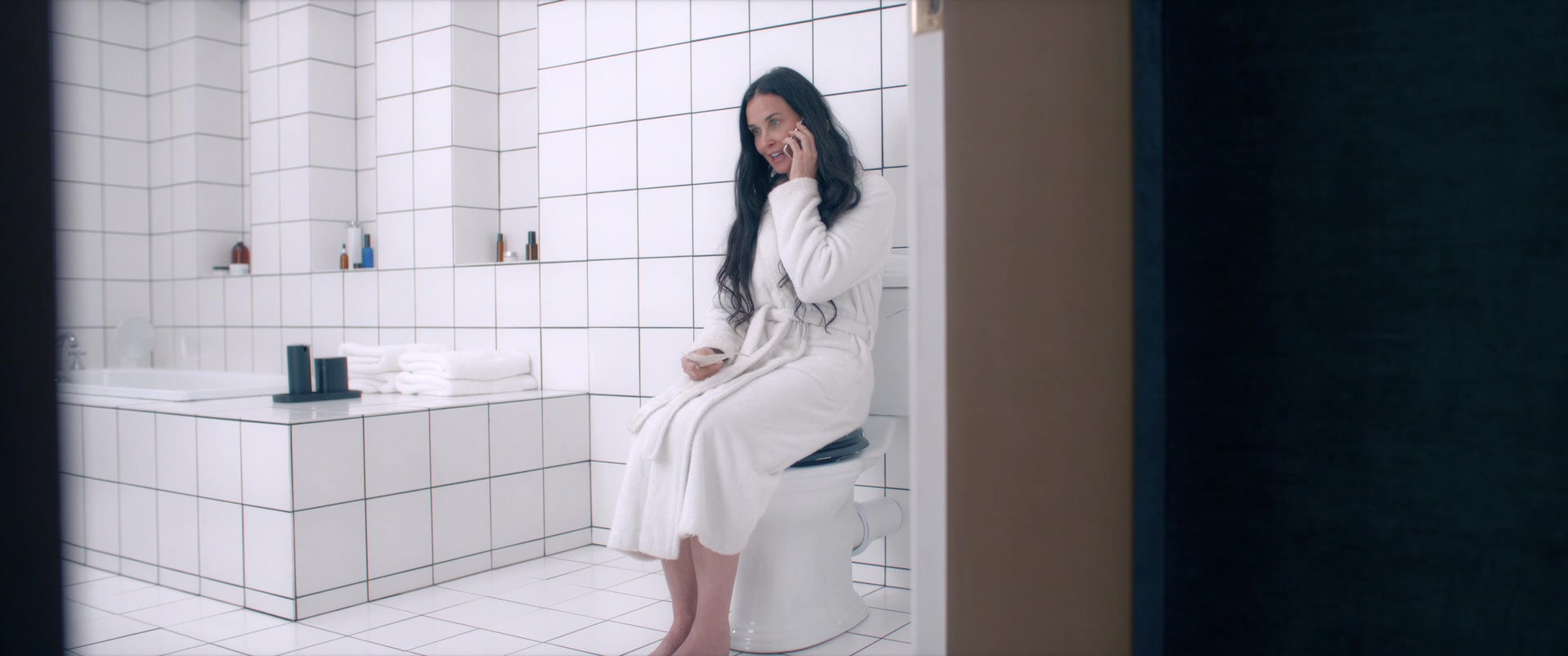


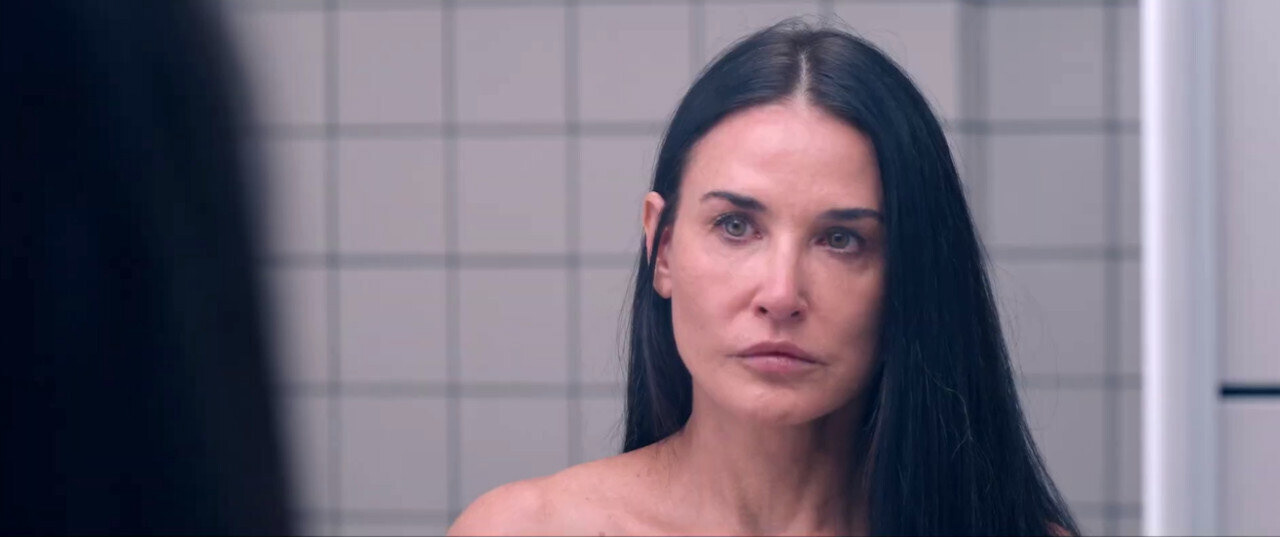


For me, the journey to the bathroom has always felt like navigating a maze—not a physical maze, but an emotional one. When I’m overwhelmed, when my thoughts are racing and my heart is pounding, it feels like every step toward the bathroom is an intense effort to find stability. The overwhelming sensations make the path seem longer, like I’m weaving through invisible obstacles just to reach a space where I can feel safe.

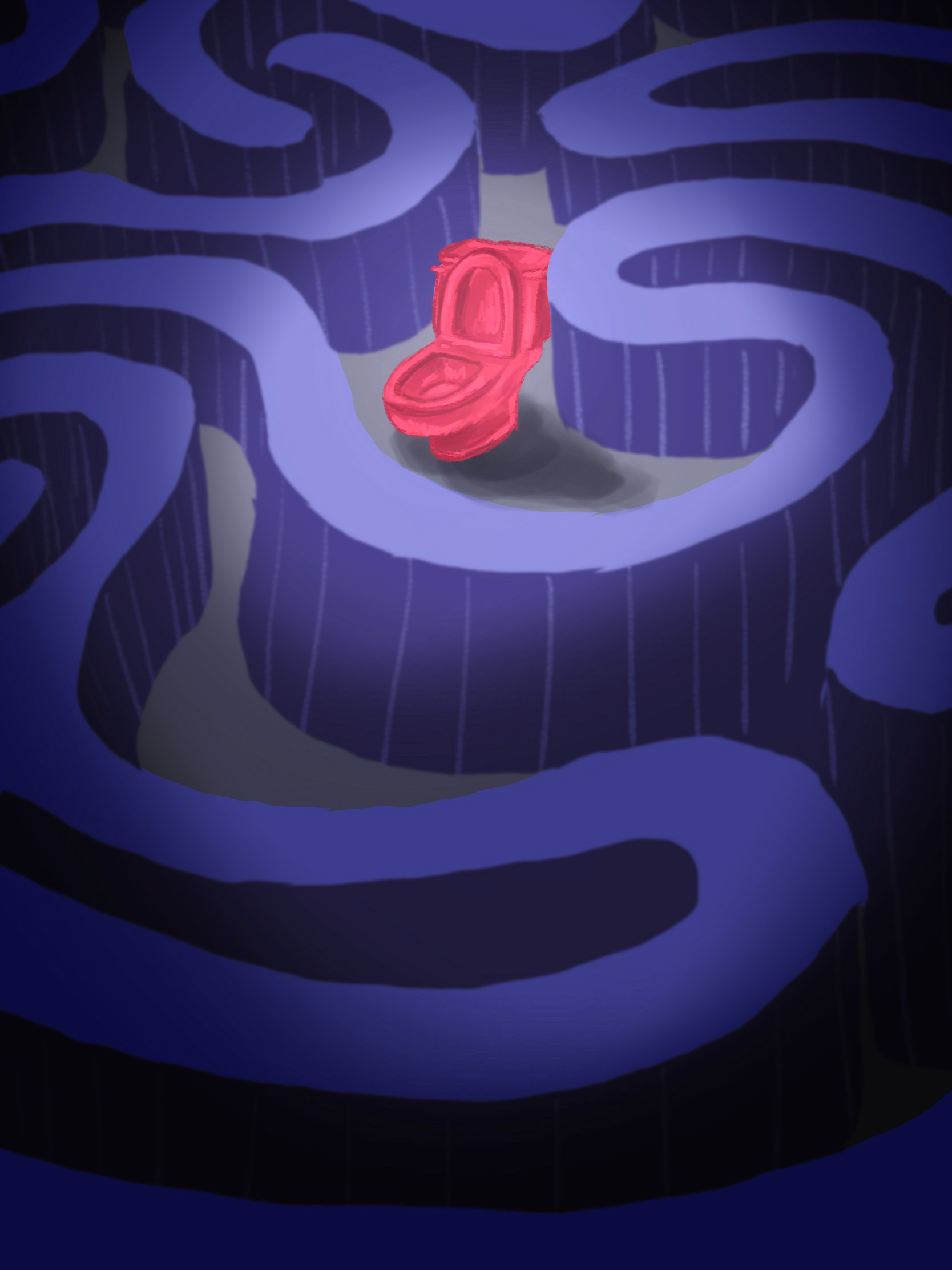
The bathroom, for me, becomes the center of that maze. The moment I step inside, there’s an immediate sense of relief, as if I’ve finally reached a place where I can let my guard down. It’s a sanctuary, a space where I can release all the tension, cry if I need to, or simply pause and breathe. That transition—from the chaos of my emotions to the calm of the bathroom—feels like a journey in itself. While the way there might feel frantic and overwhelming, stepping into the bathroom always feels like a reward, a moment where I can find clarity and regain control.
I felt a bit lost at this point, so I decided to sit down and explore the different elements of my liminal space in more detail. I thought about the walls and floors—do I prefer them tiled or wooden? Do I feel more at ease in dim lighting or bright, and what kind of light helps me release negative emotions? I considered whether certain objects, like a mirror to confront my reflection, are essential for me.
I also reflected on my body language—what positions do I naturally adopt during a mental breakdown, and how do they contribute to my process of calming down? Does the sound of running water help me regain clarity, or do I find comfort in the hum of an exhaust fan? This journey is not just about the bathroom but about understanding myself better through the exploration of this deeply personal space.

I began with doodles and observational drawings of the positions I often find myself in while lying on the bathroom floor. There are so many "floor time" poses I naturally adopt, and when I draw them, they appear almost theatrical in their intensity. Yet, these positions are deeply comforting to me.
I’ve realized my preferred pose is anything curled up—mirroring a fetal position, as though I’m back in the womb. It’s almost like I’m hugging myself, finding comfort in the small, enclosed space.






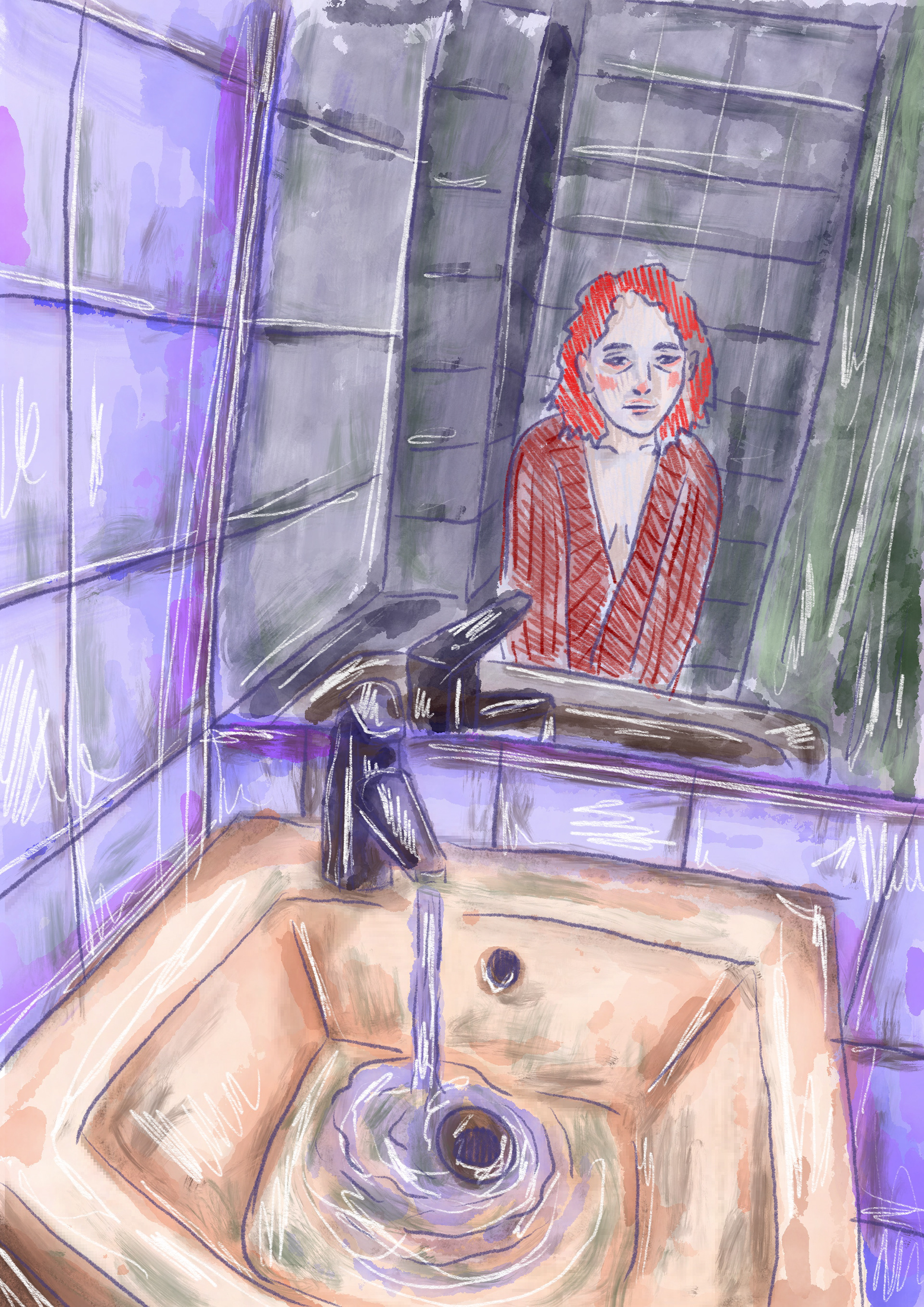
I became really interested in exploring the walls and floors commonly found in bathrooms, focusing specifically on sketching tile grids. When I think of a cliché bathroom, I immediately picture blue and white tiled grids and a cold marble floor—something designed to feel unwelcoming and sterile.
I realized that if the floors were wooden or carpeted, it would feel too much like any other room in the house. I need the bathroom to feel distinct, almost alien compared to the rest of the home. It was surprisingly enjoyable to create all these small, detailed illustrations of tiles and grids, capturing that specific aesthetic.
I find shading more enjoyable than sketching or drawing, so I ended up trying to paint a semi-realistic tiled wall.



I let myself get carried away and started combining my previous sketches, and that’s when I realized they looked a lot like an indie album cover when pieced together. So, naturally, I ended up spending way too much time designing an album cover for "Floor Time."

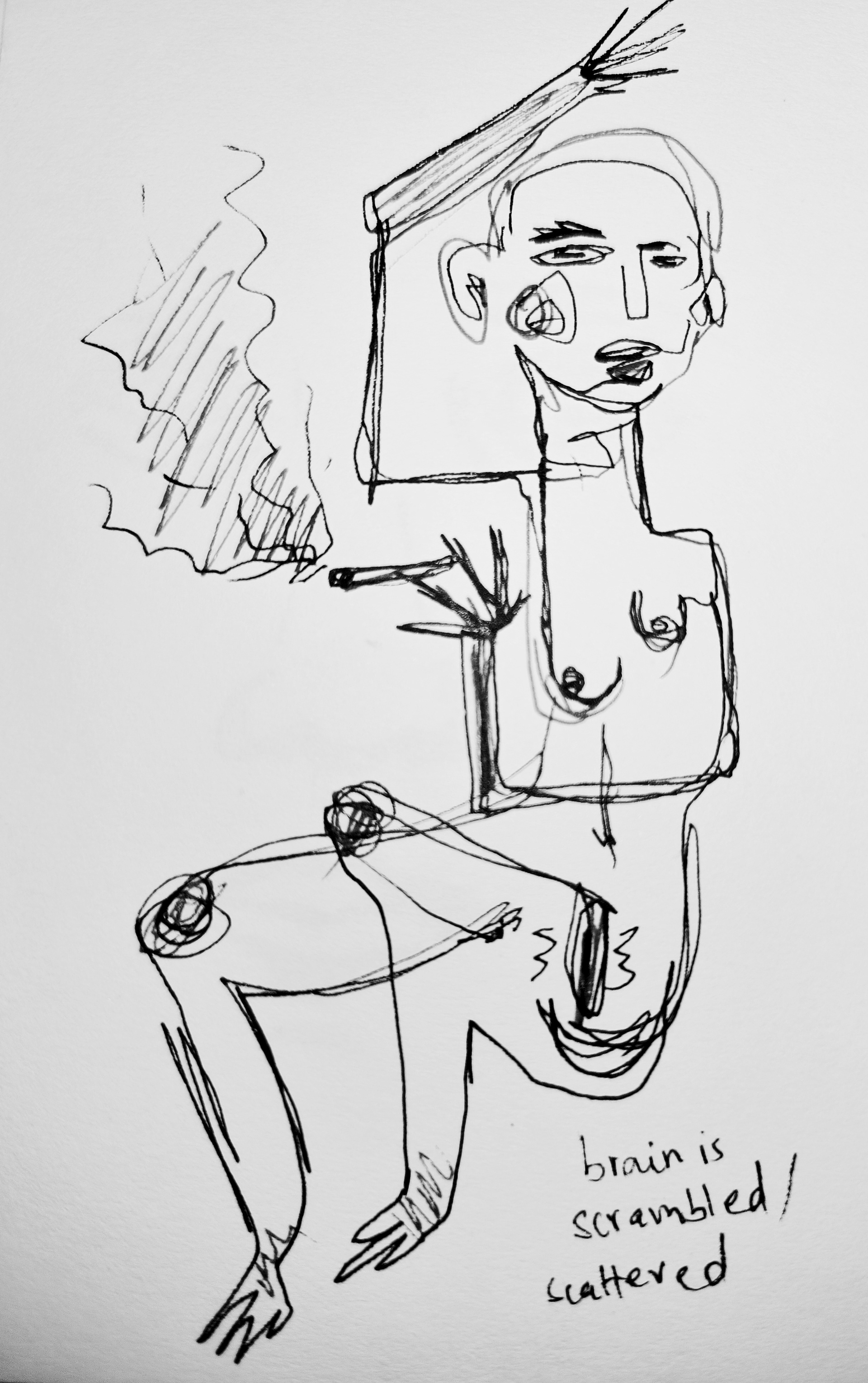


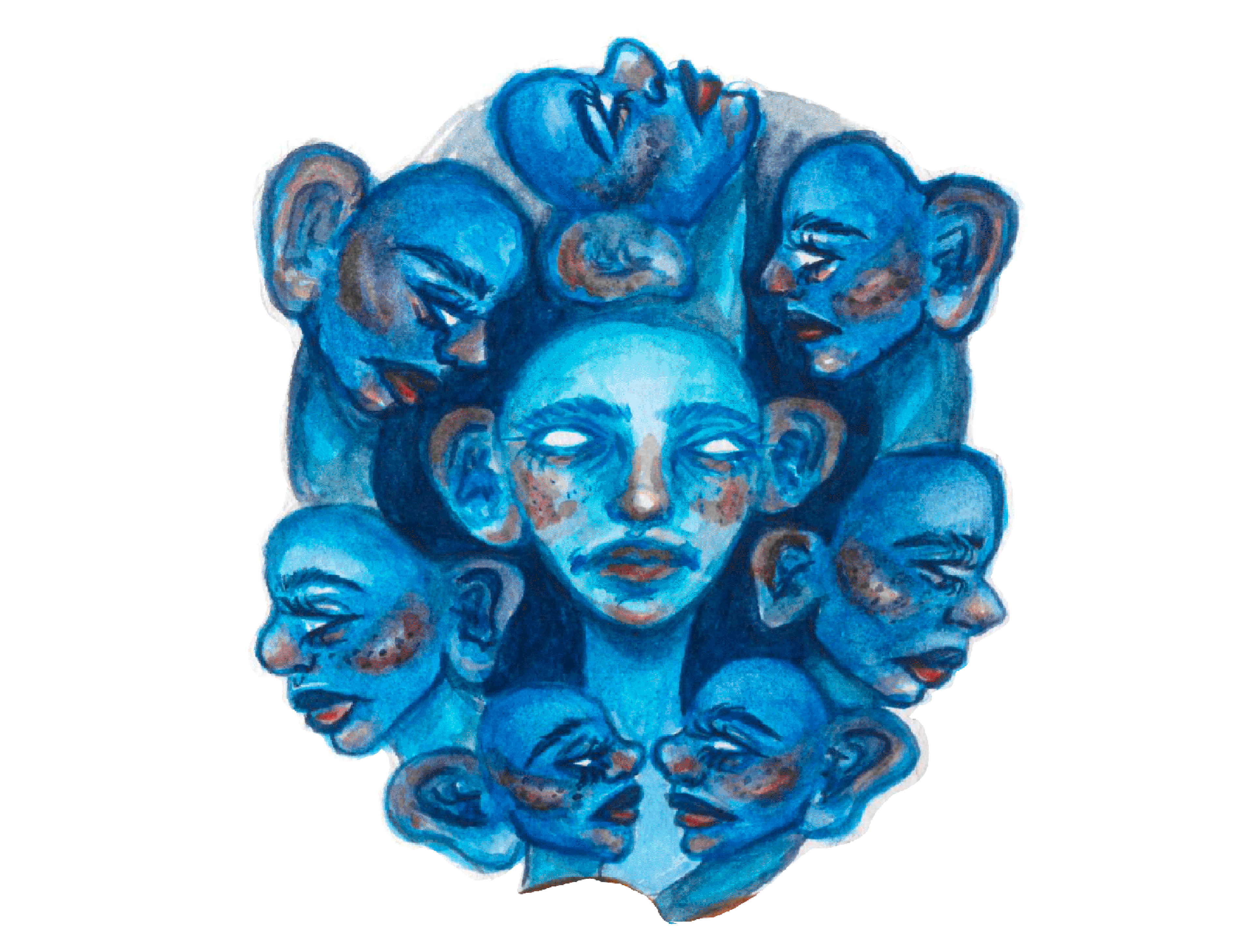
The emotional aspect of this project is the hardest for me to express because I struggle to find the right words. And because I’m unsure how to articulate it, I also don’t know how to illustrate it. To start, I began doing small sketches inspired by common phrases people use to describe emotional states, like "feeling weighed down," "your brain feeling scrambled," or "melting into the floor" during an emotional overload.
I often have too many thoughts racing through my mind, like there are too many voices competing for attention, and I’m trying to figure out which one is the real me. When I dissociate, I also get this intense feeling that my eyes are wide open—almost unnaturally wide, to the point where I feel like you could see into my optic nerve.
Living with BPD, I experience something called splitting—a sudden shift in personality—and I find this happens a lot in the bathroom. It often feels like I’m literally transforming into someone else, especially when I’m lying on the floor. Again, it’s hard to explain because everything feels so internal, and no one really talks about it, but I’m trying my best to explore and express it as much as I can.
Before choosing this project, I was originally going to work on the "Inner Place" brief, but I ended up dropping it because I couldn’t organize my thoughts. Here are the notes I made for that project, which I think could still tie into the emotional aspect of this brief.
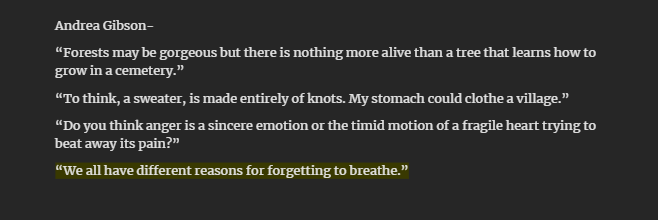

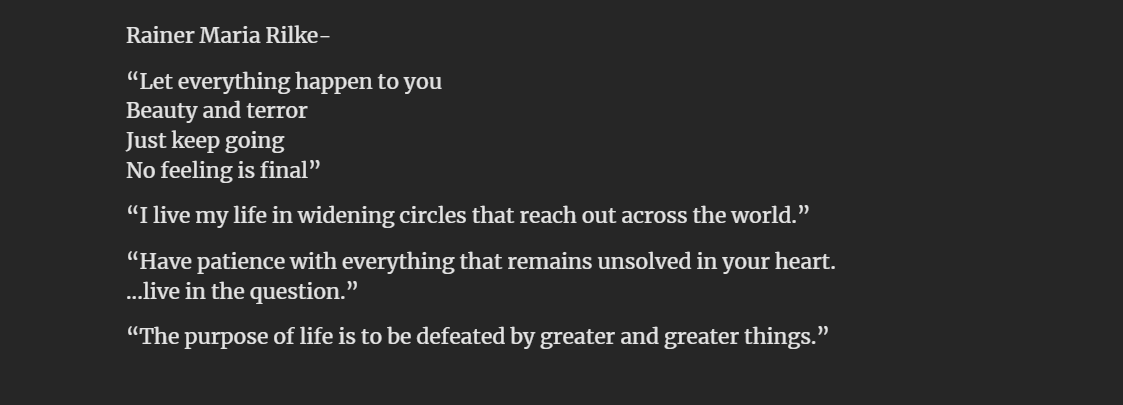
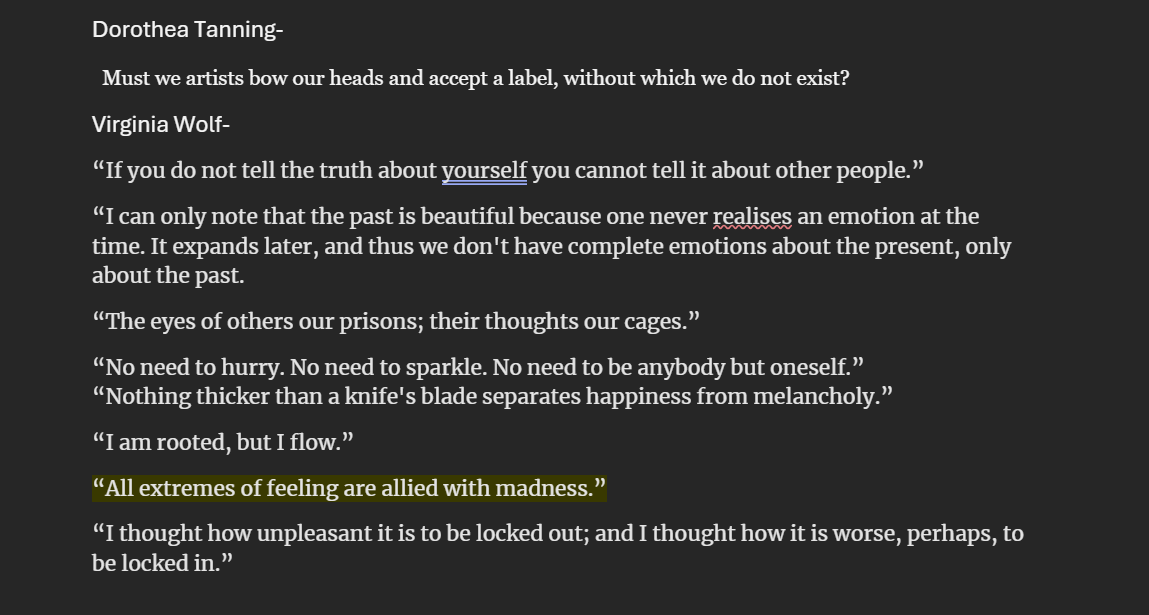
I find it hard to express my emotions on my own, but I’ve realized that the best way for me to communicate those feelings is through music. I connect with emotions better that way. However, since I’m a bit shy about the types of songs I listen to, I’ve turned to poetry to convey those feelings instead.
I started brainstorming concrete ideas for this brief and realized I really want to try animation because it’s something I’m eager to improve at. I always find animation intimidating at first, but once I get into it, it’s not as daunting—it’s just the starting part that’s the hardest for me. I’m also interested in making some zines because I enjoy telling stories or having a narrative, especially for this project.
Right now, I’m leaning toward creating an animation where I personify the bathroom itself—turning it into a living, comforting presence that helps me through a dissociative phase.

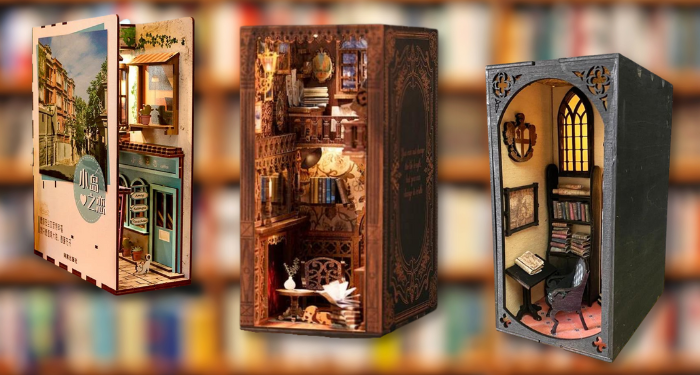

I’ve also started looking into booknooks, and I think creating a bathroom-themed bookmark would be unique because most bookmarks focus on nature or relaxing spaces. Instead of using a folder as the base for the booknook, I wanted to use an actual book. I found several books that explore reflection in solitude, especially in bathrooms, and I’ve ordered one of them for inspiration, even though it hasn’t arrived yet.



Some books I've found that resonate with my idea of having a transformation in the bathroom.
I was originally going to to approach this project through narrative. I began with a hand drawn zine that explored a mental and emotional transformation within the bathroom, almost like a before and after. The pages mapped out a quiet internal shift, visualising how emotional chaos slowly melted into stillness. This visual progression allowed me to externalise something that usually feels intangible—the messy, nonlinear journey from overwhelm to composure. It was a space where I could start to understand how my body and mind respond to distress without the need for words. The bathroom, in this narrative, became more than just a setting. It became a kind of character, silent, familiar, and nonjudgmental.

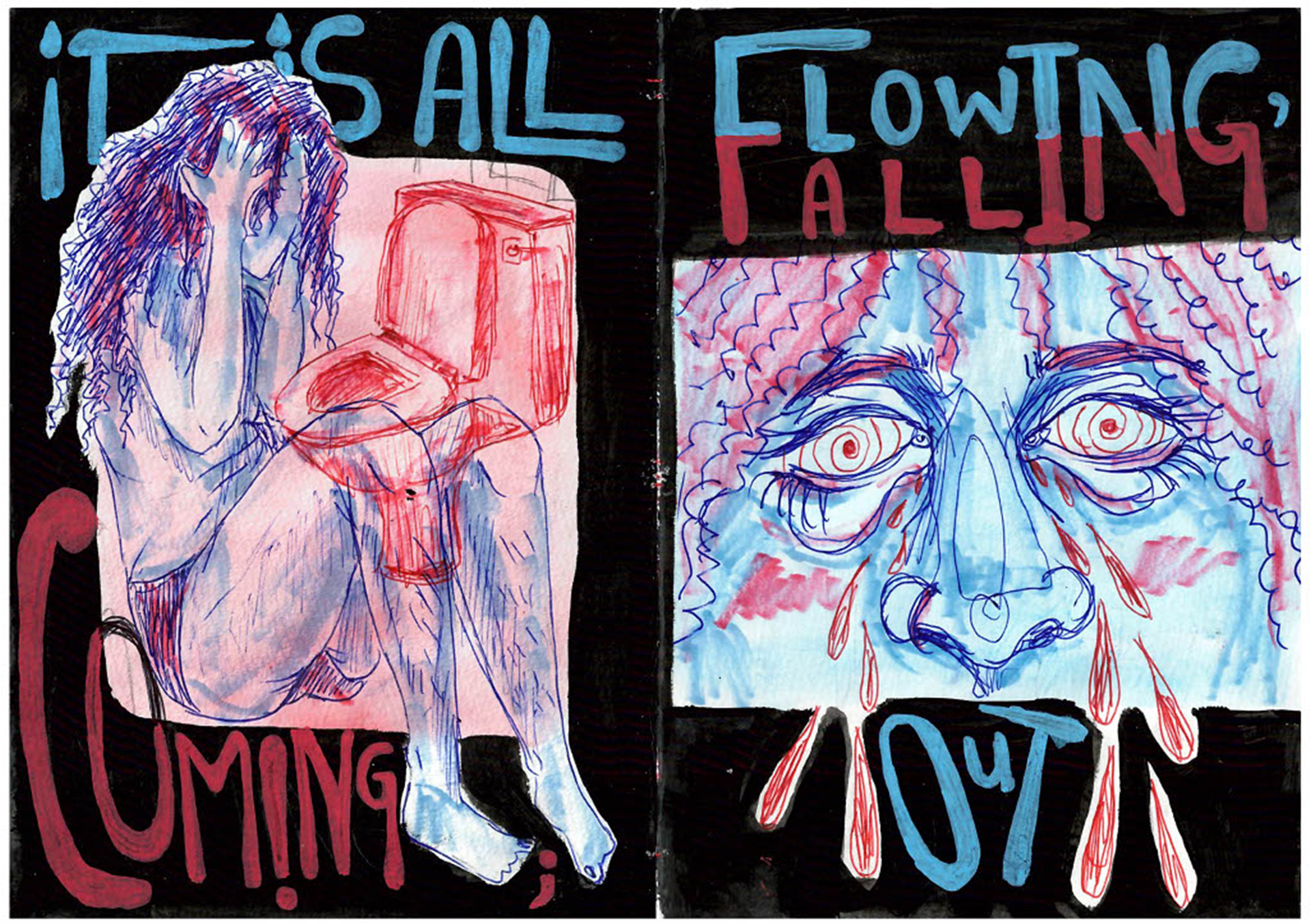



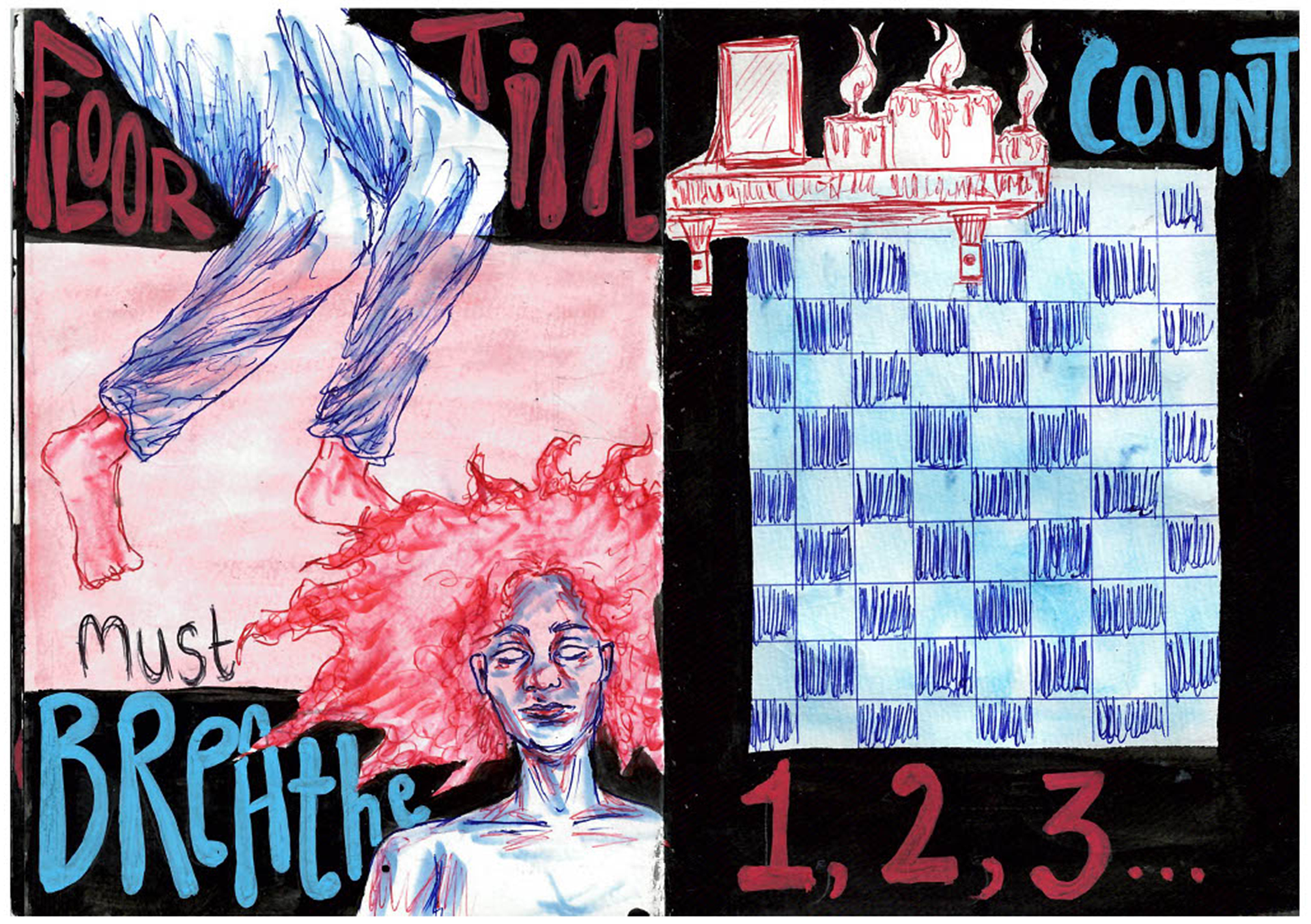
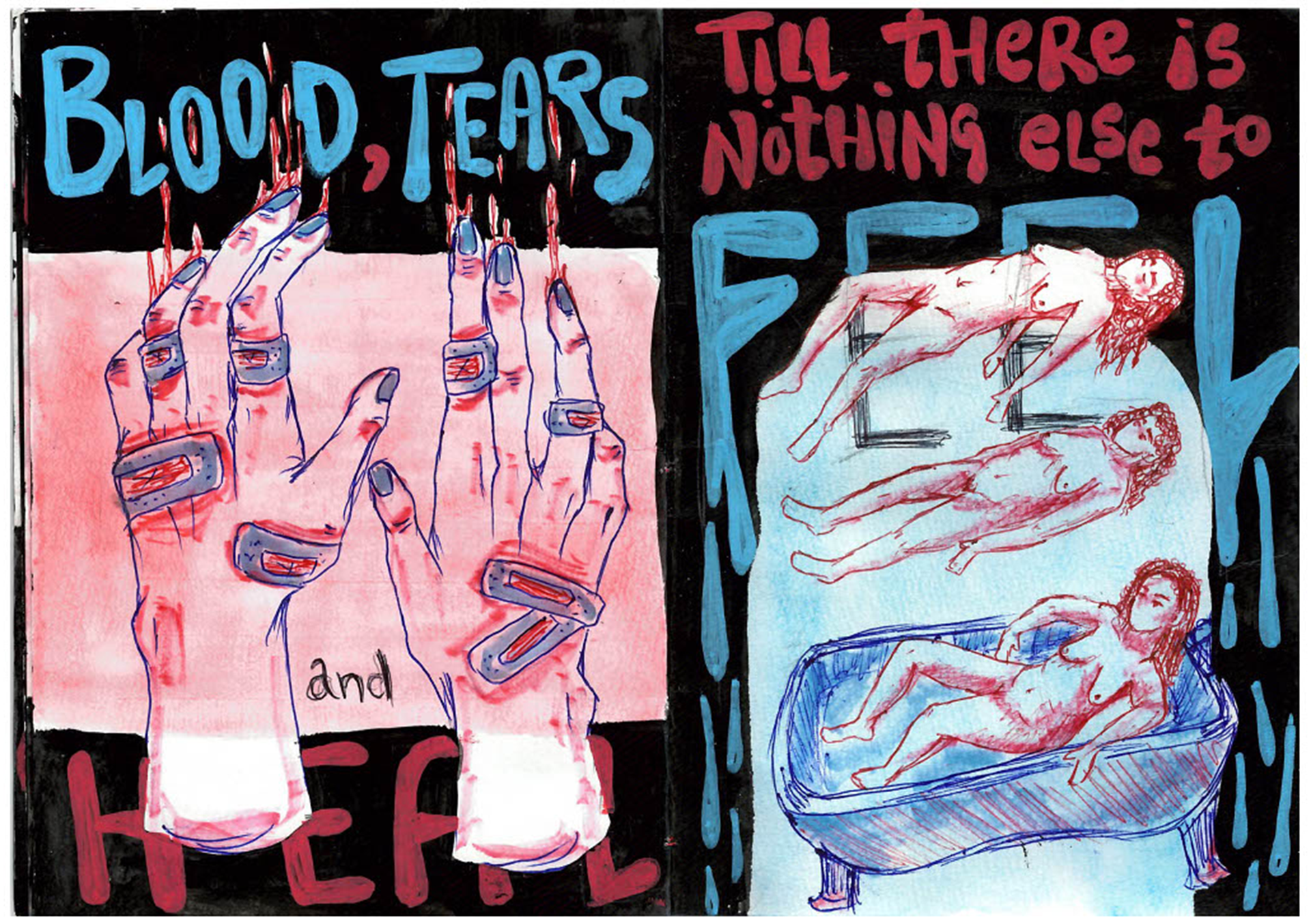
Building on the zine, I started storyboarding a more structured narrative, where I imagined the bathroom as a personified presence. It was not just a backdrop but a figure of quiet support during depressive episodes. It witnessed everything, my breakdowns, moments of silence, and the strange comfort of lying on the cold floor. It became a nonverbal companion, absorbing my distress without demanding anything in return. I wanted to explore how this environment, stripped of social expectations, allowed me to unravel in safety and eventually find stillness again.
In giving the bathroom a role, I found myself projecting emotions onto it. The condensation on the mirror began to feel like breath. The sound of water running was like a heartbeat. The cracked tiles, which I once ignored, began to resemble veins or scars, proof of endurance. This anthropomorphising of space helped me navigate my own emotions with more clarity. I was not just illustrating a place, I was illustrating a relationship. One that offered grounding when nothing else could.
Though I eventually shifted away from a traditional narrative approach, these early explorations informed how I continued the project. They reminded me that even spaces can carry meaning and memory. The bathroom became a symbol of inner transition, one that understood me not through language but through the act of simply being there.
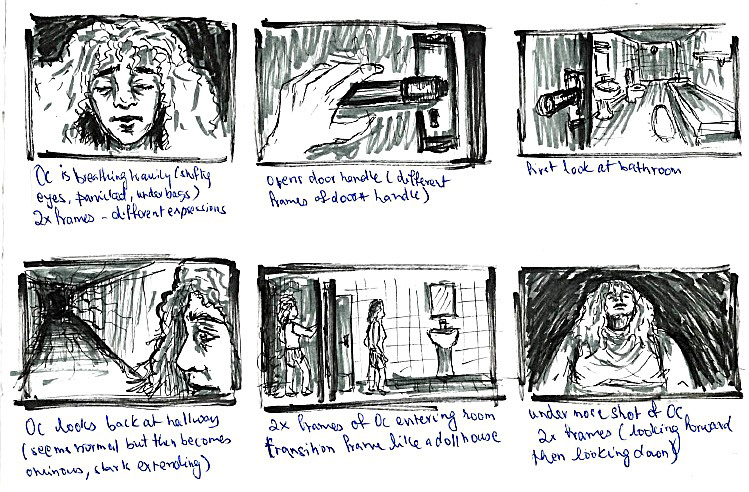



The Model
Since I was already developing a narrative structure in my first project on identity, I decided to take a different direction with this one. Rather than telling a linear story, I wanted to create something that felt instinctual and emotionally immediate. With the degree show approaching, this project began to stand out—not because it was the most polished or visually resolved, but because it was the most personal. It felt like the first time I was allowing myself to be fully honest in my practice, without trying to package my emotions into something digestible or neat.
I returned to one of my early doodles, a small, almost throwaway sketch of a bathtub. I kept coming back to it, not because of its visual complexity, but because of what it symbolised. I have never lived in a space with a bathtub, but I’ve always longed for one. It is something I have associated with the kind of self care and serenity I have only ever seen from a distance, through films, in other people’s homes, in curated Pinterest boards. I began to realise that my fixation on bathtubs was not just about the object itself, but what it represented. In my mind, it had become a symbol of emotional repair, of stillness, of letting go. I imagined what it would feel like to sink into that space during a breakdown, to be held by water instead of lying on a cold bathroom floor. That imagined comfort had become a kind of fantasy, a version of safety I had never truly experienced.
But I also recognised that this desire might be tied to my patterns of idealisation. As someone with Borderline Personality Disorder, I often latch onto ideas, people, or objects and imagine them as the solution to my emotional chaos. I romanticise stability and peace, and in doing so, sometimes place unrealistic expectations on external things. The bathtub was no exception. Still, instead of rejecting the idea as a false hope, I chose to honour it. By turning the sketch into a three dimensional model, I was giving form to a feeling I have never fully been able to name, grief for a comfort I have never had, and hope that something as simple as a space could offer healing.

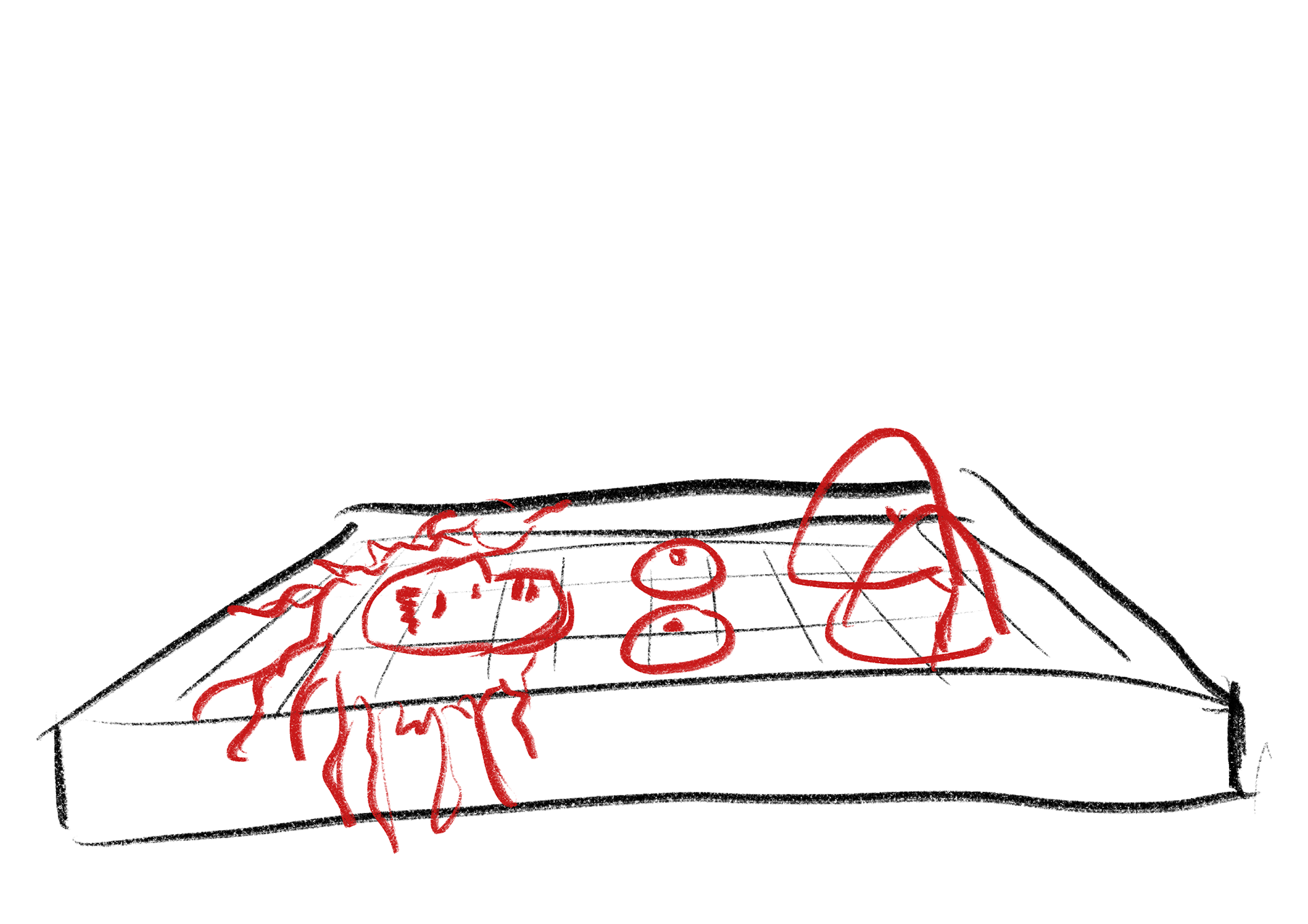






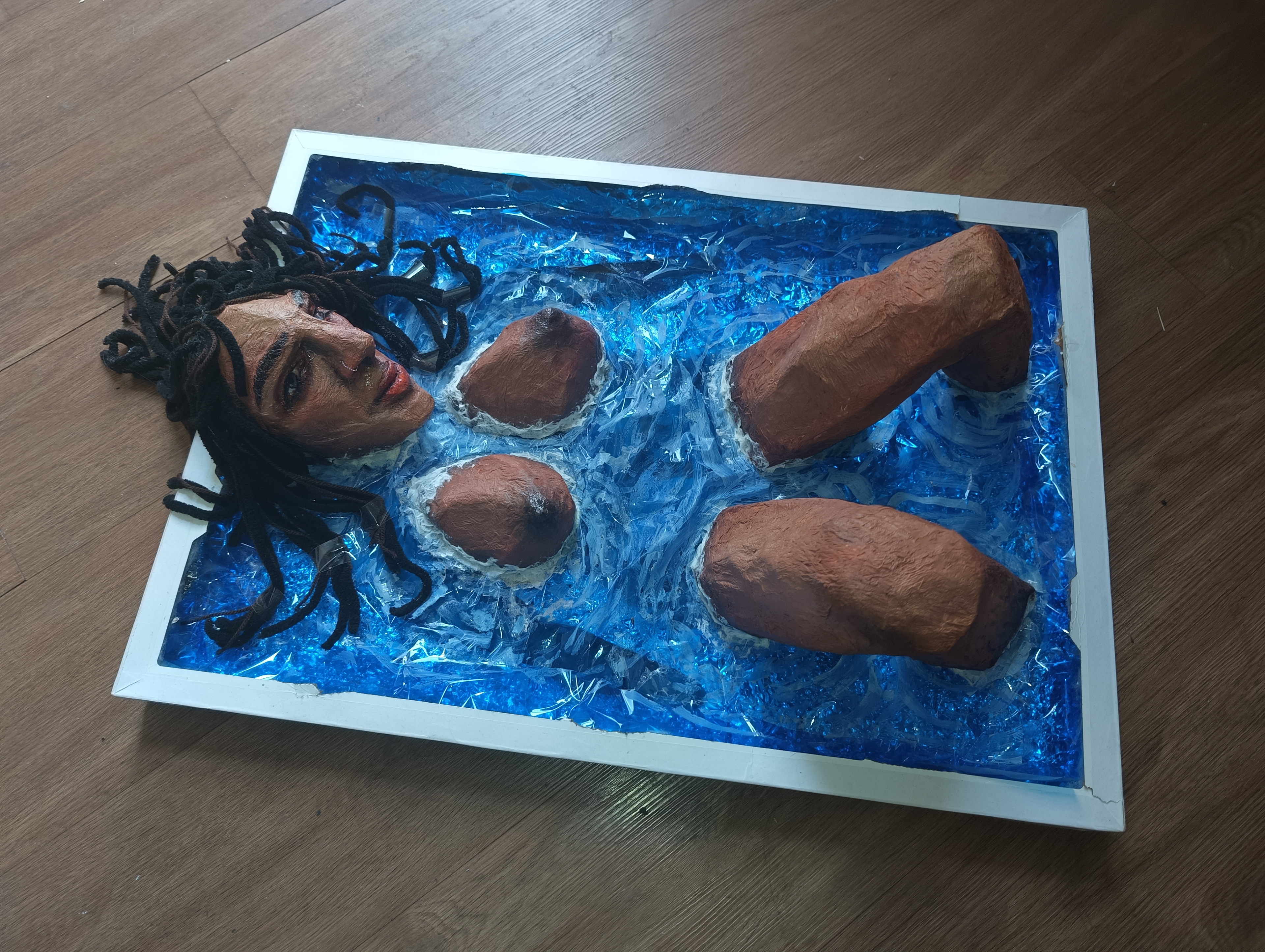
I decided early on not to use clay, thinking it would take too long and feel too heavy. Instead, I constructed the form using cardboard as a base. I sculpted the features with masking tape, then made a skin-like texture using a handmade sludge of tissue paper, flour, and glue. Once dry, I painted the figure with acrylic and added gloss to the eyes and edges of the skin using clear nail polish. For the hair, I used black and brown yarn, building it into a wig-like form to sit naturally on the head.
The base frame for the installation was something I found in the donation room in Bonington. I cut out the front of the frame to open it up and lined the bottom with foil, which I then layered with blue cellophane paper to create a water effect. I painted a submerged body beneath a second sheet of cellophane, giving the illusion of depth. The painted body was only partially visible, while the physical components such as the face, chest, and legs were attached above. I painted water ripples directly onto the surface and used glue to thicken and distort the edges, giving the impression of motion.
The entire process took about a week. It was fast and instinctive, moving quickly once I understood why I was making it and what I wanted it to express. I did not want to overthink it. I just needed to be honest. The final piece is not perfect, but it is sincere.
The Photos





